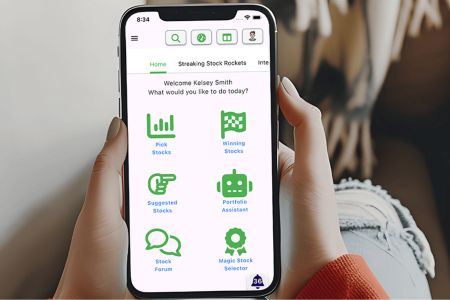Entrepreneur
Success in sales isn’t just about meeting quotas. It’s about fostering a culture where teams thrive, customers are delighted and growth is sustainable. Yet, many organizations struggle to strike the right balance between scaling their sales operations while ensuring the happiness and effectiveness of their teams.
So, how do organizations cultivate happy, scalable sales teams and strike the right balance for success? Some core elements contribute to a fulfilling and successful sales environment.
Related: Don’t Scale Your Sales Team Until You’ve Done These 4 Things
Defining “happy” in sales processes
All too often, when we meet with prospects, we encounter salespeople who feel overwhelmed by the pressures of their roles. The stress of meeting quotas and generating leads can take a toll on their well-being and effectiveness. Salespeople without clear direction and support from leadership cannot succeed. They may struggle to navigate these challenges effectively without guidance. Happiness in sales extends beyond hitting targets and growing the bottom line. Here are some of the competencies we’ve seen in happy, successful sales teams:
Individual/team effort and efficiency: How much effort does it take to get the deal done? Minimizing manual tasks and streamlining processes can help alleviate stress and improve productivity across the organization.
Transparency and support: Are sales reps given the direction and support they need to succeed and maintain traction? Obtaining clear guidance and resources from leadership is crucial to growth.
Sales cycle length: Is the sales cycle overly prolonged and unnecessarily complicated? By shortening the cycle through efficient processes and effective lead management, companies can reduce stress and increase success rates.
Leadership satisfaction: Are leaders equipped with the insights they need to make informed decisions? Having visibility into the sales pipeline and performance metrics is essential for effective planning and resource allocation.
Related: 4 Ways to Stop Getting Distracted and Start Hitting Goals
Addressing common sales pain points
We work across a very wide range of industries, everything from manufacturing, distribution, SaaS, finance, healthcare, environmental, professional services and a long list of many others. My company has visibility into multi-departmental and cross-departmental alignment (teams from 1 to 500-plus people), and let it be known — no two sales processes are the same, even when it is within the same industry targeting the same personas. The irony is regardless of size, there is this misconception that because an organization is large, they have everything organized, mapped out and process-driven. Simply put, that’s not always true. Think of it this way: more people, more moving parts, more risk — more room for error.
We see sales teams structure across territories, business development representatives (BDRs) versus account executives, and sales teams focused on channel versus direct, all of which influence the sales process, hand-off and efficiency for the likelihood to close. One of the best parts is because we are exposed to so many business models and processes, we get to see the best of the best and also easily identify how to improve someone’s process through automation.
When we get down to the root of the issue, many sales teams face common challenges that hinder their ability to reach their full potential. The most common ones we see are:
Sales and marketing misalignment: Miscommunication and friction between sales and marketing teams can lead to missed opportunities and finger-pointing, and no one wants that. Open dialogue and collaboration are key to bridging this gap.
Lack of transparency and reporting: Without robust reporting systems, sales teams may struggle to track progress and identify areas for improvement or clear trajectories for closing deals faster. Transparency in reporting fosters accountability and enables data-driven decision-making on both the marketing and sales sides.
Resistance to automation: Some sales teams resist adopting automation tools for fear of added complexity or a belief that it will replace human interaction. However, automation can streamline processes, free up time for more meaningful interactions with customers and focus on things a machine cannot do, like close the deal.
Strategies for scaling sales success
It saddens me to see talented individuals facing such challenges because they are good salespeople. There is something special about sales. I love their ability to connect with others, come from a place of help in the sales process, and sell collaboratively as a team. They have a super special people-focused gift, and I love to see them flourish and thrive in their roles.
The concept of success is to remove any frustrating friction points or manual tasks that suck the life out of that salesperson’s main focus, closing the deal. They are measured and paid for this. If you want to lose a great salesperson, watch them continue to miss quotas, become frustrated because they aren’t reaching their financial targets and leave to go to another organization. Things like updating properties in a CRM, manually adding a new lead, sending a reminder email without automation, follow-up documentation, enrolling them in your marketing materials, and so, so many other things that quite frankly distract and wear down a salesperson.
I’ve seen thriving salespeople succeed in one organization with structure and move to another and miss quotas monthly because they were not given access to the same tools. To build a happy, scalable sales team, organizations should consider the following strategies to keep everyone focused on the big picture —happiness.
- Start with setting clear goals: As an organization, defining clear, measurable goals and regularly communicating them to the team is by far the most common misstep we see in organizations. Many times, it can seem like two organizations are functioning within one organization if this is not followed. Teams should break down larger objectives into smaller, actionable steps to keep everyone aligned and on track.
- Openly embrace technology: Teams and individuals should leverage automation tools and CRM platforms to streamline processes, improve efficiency and enhance visibility into the sales pipeline. This is not designed to replace humans but to augment activity.
- Encourage cross-departmental collaboration: Foster a culture of collaborative team selling between sales and marketing teams. By encouraging open communication, knowledge sharing, and alignment on goals and objectives, organizations can reach goals faster, with less stress and greater rewards. Some examples include adding infrastructure that encourages shared reporting, dashboards, and weekly alignment meetings across teams.
- Invest in continual training and development: Organizations should provide ongoing training and development opportunities to empower sales reps with the skills and knowledge they need to succeed. These can be done through internal resources or a third party. Training should not be one-and-done.
- Prioritize personal well-being: It’s crucial to recognize the importance of work-life balance and prioritize the well-being of sales team members. Companies can do this by celebrating successes, providing support and offering resources for managing stress and maintaining mental health. It goes a long way in finding happiness inside and outside of work.
Remember, building happy, scalable sales teams requires a combination of clearly defined goals, effective ongoing communication, technological innovation and a supportive, open culture. Organizations that face addressing common pain points head-on and implementing proactive strategies can create an environment where sales teams thrive, customers are delighted, and business growth is sustainable (while still tracking up). It’s time to unlock the full potential of your sales team and drive success in the competitive marketplace.
Read the full article here









